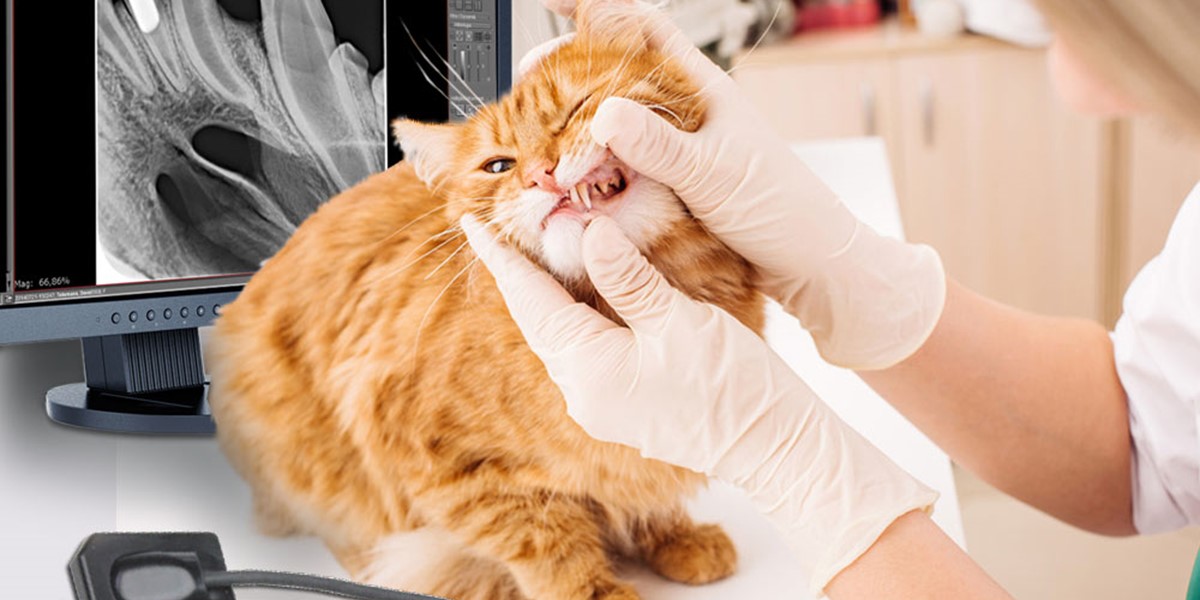Find out more about how this website uses cookies to enhance your browsing experience.
Dental Radiography: The importance of dental radiography and how to choose your equipment

The knowledge gained from dental radiographs is invaluable, not only to improve patient care and empower owners to make informed decisions, but also to reduce complication rates and speed procedures.
Why you should start taking dental x-rays in small animal veterinary practice:
- Periodontal disease – pockets can easily be missed with probing. Weakening of the mandible associated with small and toy breeds can create high risk for pathological fractures – know what you’re dealing with!
- Identify tooth resorption and know whether a full root extraction is required – save time and frustration by planning appropriately
- Identify camouflaged endodontic disease in crown fractures and worn teeth
- Plan extraction of deciduous teeth appropriately – if significant resorption has occurred, surgical techniques to avoid root fractures are required.
- ‘Missing’ teeth or hidden pathology! – identify teeth that have fractured below the gum line or embedded teeth with dentigerous cysts
- Post-extraction radiographs are necessary to confirm no retained roots!
What equipment will you need?
Generators
Although specific dental generators are easier and more convenient to use, your existing x-ray set-up can be used especially if the tube head can be raised or lowered, and angled. If the tube head is not maneuverable, it is then necessary to position the patients head differently for each view. The other disadvantage of using your existing set-up is that it is often located in a separate room from where the dental procedures take place, meaning the patients will have to be moved.
Dental X-ray generators are smaller, more maneuverable and can be installed next to your dental table, making dental x-rays quick and easy to take. Stand-alone, wall-mounted or hand-held machines are available. Most clinicians preferring a wall or trolley mounted set-up to enable easy re-positioning and for enhanced safety (exposures can be taken remotely).
More information about the Best-X DC wall and trolley mounted systems

Hand held generators are a more flexible option and require less space, but it is more difficult to make positional adjustments.
More information about the Cocoon handheld generator visit:

Sensors
As with standard X-rays, CR and DR options exist. The resolution is comparable between the two set-ups, the difference being image acquisition time and ease of positioning.
DR systems include a dental plate which is connected to a PC. Images are acquired in seconds, and because there is no need to remove the sensor for processing, repositioning is easier if the images are not diagnostic. DR can often be easily added to most practice set-ups and image acquisition software.
More information about the DX-R Dental sensor

CR systems include different plate sizes so a range of size of patients can be imaged more easily – ideal for those imaging cats and for cat only clinics. The plates are also thinner and therefore easier to position.
More information about the Fire CR systems

Choosing equipment for your practice can be daunting, but with experienced engineers and consultants, we can discuss your options, assist with room layout and find your best fit. Book a free consultation now.